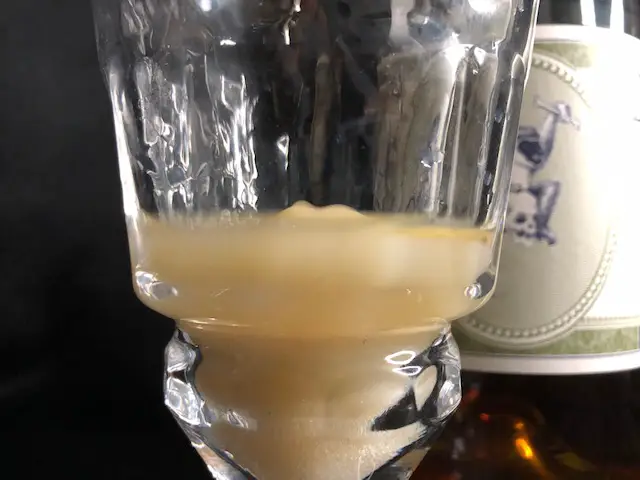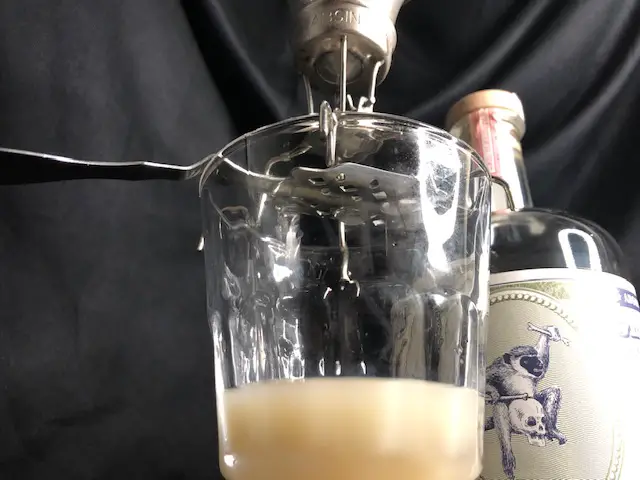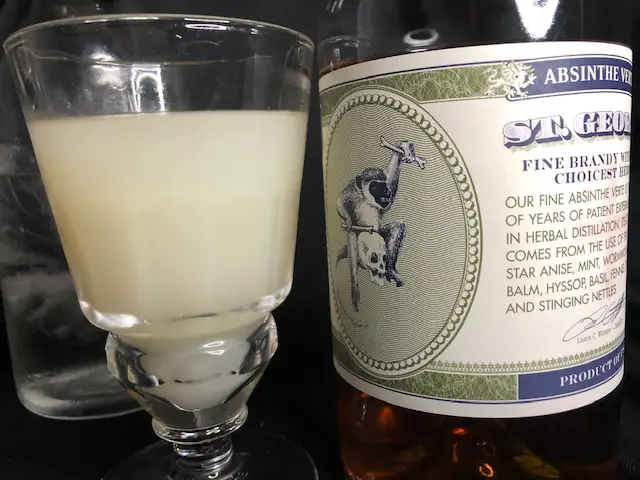While the distillers at St. George have worked tirelessly to refine their recipe over time, they seem to have been very happy with their formula over these past several years.
They just might be right, too! After all, St. George is a brand that seems to be a fixture in the absinthe section of nearly every liquor store in the US. At least the ones that I’ve been to across the entire Southern US, anyways.
Even if the store only has a couple of absinthes, you can almost bet that one of them will be St. George!
But is St. George Absinthe Verte worth it?
With a ton of unique ingredients, possibly my favorite logo (because who doesn’t like monkeys?), and a place on virtually every liquor store shelf in the US, I’m happy to finally offer my no-holds-barred review of St. George Absinthe Verte!
Let’s ready our glasses and get to it!
Early Movers
St. George Absinthe Verte makes the same claim as Lucid Absinthe as being the first true absinthe in the US market to be approved for distribution since the ban was lifted in 2007.
While I have found Lucid’s COLA (Certification of Label Approval) dated March 5, 2007, I haven’t found the date for St. George since the registry only goes back 15 years.
But either way you look at it, St. George distinguishes itself as an absinthe with an important role in the modern history of the Green Fairy.
Whether they were the absolute first or not is splitting hairs. I’m sure there are passionate arguments to be made on both sides, but I don’t know that I particularly care.
What actually matters is that St. George is one of the true OGs of the absinthe renaissance in the US.
Related: Absinthe in the US – The Rise, Fall, and Rise Again
What Is St George Absinthe?
St. George Absinthe Verte is made by St. George Spirits in California. It has an ABV of 60% (120 proof) and is made in small batches with a brandy base.
Where you typically have to taste and sniff out the various herbs in an absinthe, St. George lists their herbal ingredients on the bottle. Honestly, I’m a fan of this transparency and wish that more absinthe brands would do the same.
The herbs used to make St. George absinthe verte include star anise, mint, wormwood, lemon balm, hyssop, basil, fennel, tarragon, and stinging nettles.
Amongst absinthe critics and aficionados, the use of star anise instead of green anise is the source of some controversy. If anything, I would personally like to see both used but otherwise, I take no issue with the use of star anise.
Recommended: How to Properly Prepare Absinthe (Beginner Friendly Guide)

Aroma
There is an initial sharpness to St. George Absinthe Verte that can very easily catch you off guard.
Even for the seasoned absintheur, the smell of the herbs being carried by the brandy base creates a noticeably different bouquet of aromas than one might be used to.
It’s not a bad thing, but it will likely be surprising.
The lemon balm and mint are particularly strong with an extra kick provided by the tarragon and crisp basil. I do pick up faint notes of anise and wormwood, but they are very subtle.
As you might have guessed from the large list of herbs on the bottle’s label, this is a very complex spirit.
Taking several scrutinizing sniffs, the whole thing made me start to feel like Alice falling down the rabbit hole. Every sniff brought some interesting new aroma as the herbs mingled.
When adding water, the louche simply amplified the notes that I was already picking up. The wormwood was mildly more noticeable, but everything else stayed fairly consistent.

Color & Louche
Likely because of the brandy base, light exposure from being in a clear bottle, or both, St. George has a color known to absintheurs as feuille morte or “dead leaf.”
This doesn’t necessarily damage the flavor, but it does cause the greens from the herbs to turn into the orangish-brown that you see.
Honestly, it’s actually a good sign that shows that the absinthe is naturally colored and free from the obnoxious dyes that many lesser distillers use!
Adding water, we now wait for the magic to happen and…
Wow! The louche here is remarkably quick, which was actually a little upsetting. Watching the louche form and swirl through the glass is one of the best parts of preparing absinthe.
It feels like a missed opportunity.
However, St. George Absinthe Verte does have a very thick louche with rich and deep mustard yellows nestled within the milky appearance.
I’ve seen a few absinthes with thick louches and they tend to be among my favorites, but this is definitely one of the rarer hues I’ve seen.
I would have liked to see more oil trails and spectacle from the louche, but it’s not bad.
Related: Why Does Absinthe Lose Its Green Color?

Flavor
If the aroma was falling down the rabbit hole, then the flavor was Wonderland. There was still a lot to take in, but it began getting easier to make sense of what was in front of me.
The brandy base of St. George Absinthe Verte makes for such a unique flavor experience.
Between that and the wide variety of herbs being used, it’s a complex mix of sweet and savory flavors that hits differently than any other absinthe I’ve tried.
Freshness from the mint and citrus carries well and perfectly complements the grassy notes in this absinthe. However, it doesn’t stop the anise from shining through.
The basil is particularly prominent on the back end and combines well with the wormwood and tarragon. Together, they make for a clean and very herbal finish.
Personally, I tend to prefer absinthes that have a flavor that lingers more. For better or worse, St. George’s flavor leaves the palate just as swiftly as it arrived.
There isn’t as much of an oily mouthfeel to St. George as I would have hoped. While I enjoy the flavors being presented, the texture does leave a bit to be desired.
But the unique mix of herbal flavors is certainly captivating. I do recommend preparing this one with sugar since it can actually be a bit overwhelming without it!
Make no mistake, this isn’t an absinthe that is looking to be traditional and that shows.
Instead, the flavors tell a story of bringing new creativity into the centuries-old practice of crafting absinthe. It seems to be picking up immediately where the distillers of the early 1900s left off during the absinthe bans of the early century.
Related: How To Taste Absinthe Like a Pro

Conclusion – St George Absinthe Review
St. George Absinthe Verte is clearly looking to be to absintheurs today what Pernod was to absintheurs in the Belle Époque: complex, delicious, and readily available.
So, while St. George Absinthe Verte might be a far cry from the more traditional absinthes, I think it challenges the absinthe world in the best possible way.
That is, the distillers clearly understand the craftsmanship, tradition, and history behind what they are doing. However, they are looking for new and innovative ways to carve out their own name within that tradition instead of simply staying in the shadows of giants.
I’ve seen plenty of people bite their thumb at St. George, but I think that comes from a certain sense of rebellion. It’s easy to bash something that is so readily available and take it for granted, especially when it’s something different.
I like traditional absinthes as much as the next fiend, but I am especially drawn to those who reimagine those traditions and make them their own.
So, while it’s certainly different, I respect what the folks at St. George are doing here. Especially for the price, you won’t find many (or likely any) others offering this kind of unique flavor profile.
If you are just getting into the world of absinthe, this isn’t a bad starting point. Just know that this is an absinthe that is playfully making its own rules.
Similarly, this is worth checking out if you are more of a traditionalist who is looking to broaden your horizons.
